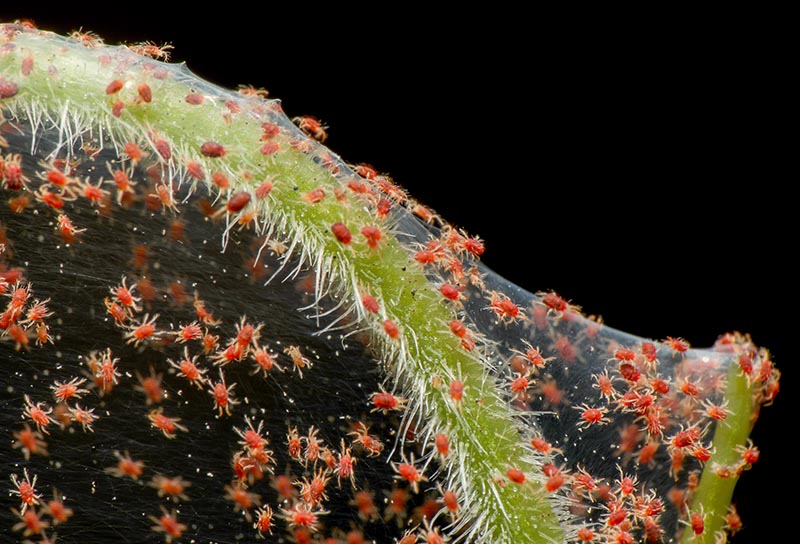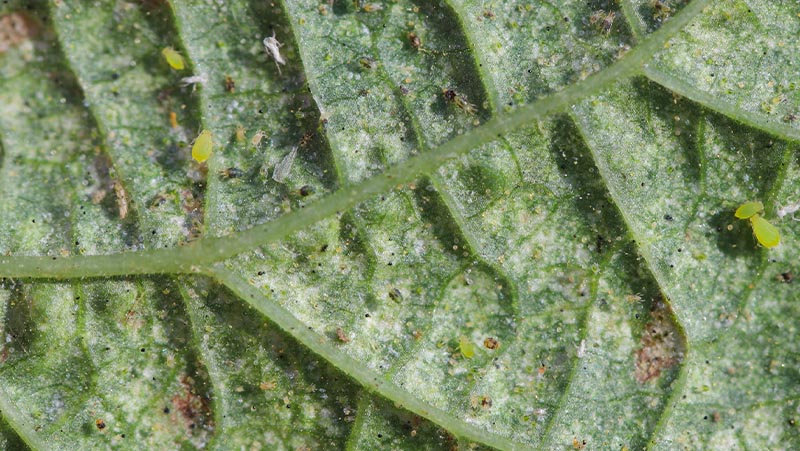Plant Pests and Diseases
Identifying and treating common pests and diseases
Pests and diseases can cause great physical and aesthetic damage to plants, so it’s important to be able to identify them and know the most effective methods of treatment. Due to their size, pests can be difficult to spot; most of them are small, very small or even invisible to the human eye. You may unfortunately only be able to spot their establishment once your plants have been affected in some way.
In addition to the problems caused by pests, plants can also be affected by a number of different fungal or bacterial diseases. Fungal diseases are caused by fungi, which survive by parasitising the different plant parts, such as leaves, young shoots, flowers and branches. Bacterial diseases are caused by parasitic bacteria entering the plants through wounds, and attacking the plant cells. If they are not treated in time, fungal and bacterial diseases lead to complete wilting of the affected species. When it comes to ornamental plants, fungal diseases can compromise the aesthetic performance and beauty. Practicing good plant observation is key to catch the symptoms in time—such as changes in leaf colour.
To keep plants free from pests and diseases, it’s essential to stay vigilant and actively keep them at bay, in an environmentally friendly way. With this in mind, when treating pests and diseases, we recommend biological pest control methods. This is a specific strategy and is an environmentally friendly alternative to using chemicals, such as pesticides and fungicides. It’s also important to ensure the environment is suitable for the plants, as this will help them to thrive and be less susceptible to various diseases and pests. When introducing new plants, check for any signs of pests and diseases which may already be present. Furthermore, the isolation of new plants can help prevent the spread, before planting amongst already established plants.
Here is a list of some of the most common plant pests and diseases you may find, including signs of their establishment and how to effectively treat them.
Pests
Aphid
Aphids (plant lice) are one of the most widespread and feared parasitic insects; they suck the sap from ornamental plants and cover it with a sugary substance, known as honeydew. This action suffocates leaves and attracts harmful fungi and insects. There are over 500 aphid species in Britain; some feed on a small number of plants and others have a wide range which they can be found on. Aphids take over most of the garden and ornamental plants, and can often be found hiding on the undersides of leaves in spring and autumn—when they are most active. Signs of aphid infestations include wilting, curling, stunted and yellowing leaves, as well as a sticky substance.
Natural predators usually control and eliminate aphids. However, sometimes action needs to be taken. Biological products, such as macerated garlic, can help to treat aphids.
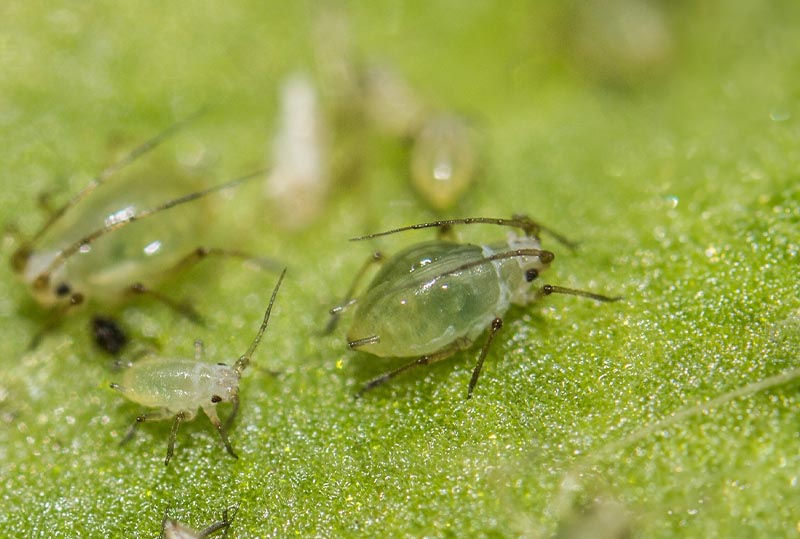
© Lennart Tange on Flickr
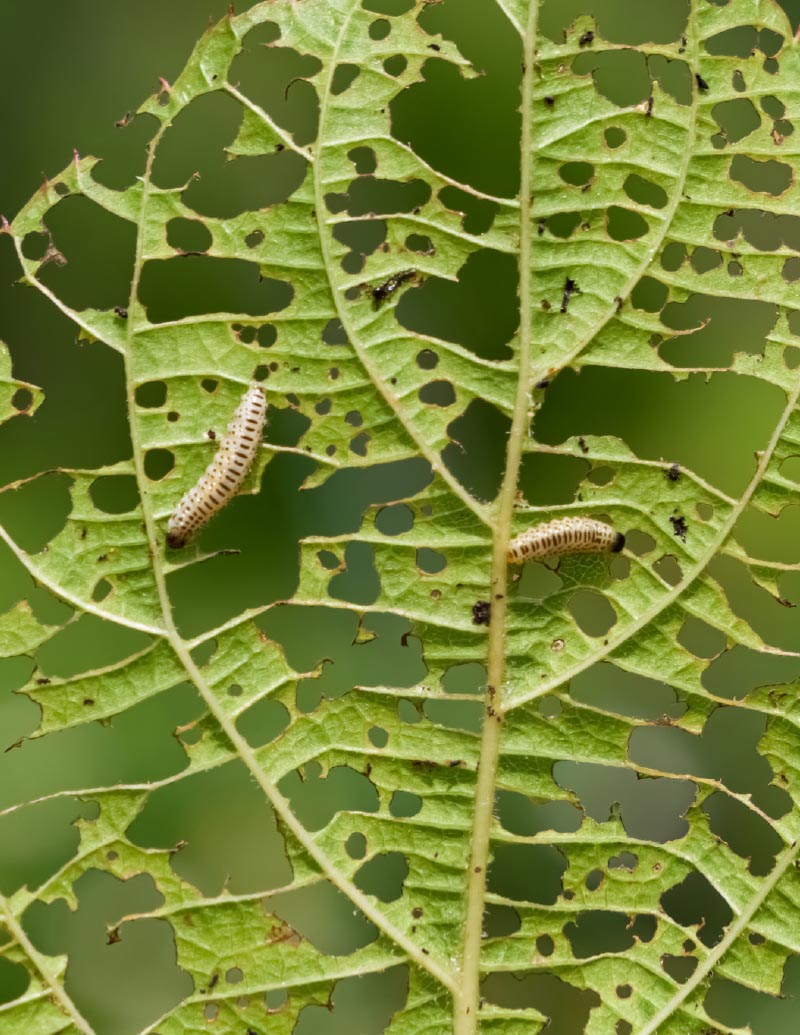
Caterpillar
Caterpillars are completely harmless and beautiful as adults, but deadly in the larval stage. Caterpillars of diurnal and nocturnal butterflies devour leaves and wood, and can usually be found on the underside of leaves on most plant types. They are most active in spring and summer, and signs include holey, shredded, rolled or webbed leaves. Eggs and excrement can also be spotted.
Small infestations can be controlled by removing the affected leaves. When it comes to larger infestations, a soap based solution or neem oil can both be great options for treatment.

Whitefly
Whitefly is a plant parasite of tropical origin and finds its natural habitat in warm and humid areas. Adult whiteflies are very small and usually do not exceed two and a half millimetres in size. Their behaviour is very similar to that of aphids, by feeding on the sap of plants and producing honeydew; this can eventually lead to black mould. Adult insects and larvae can both damage plants by sucking the sap—where plants draw their nourishment from. They populate rather quickly; females are very fertile and their life cycle can take about three weeks in total. Whiteflies tend to be hidden under the leaves of ornamental plants. They are active throughout the year, but are especially active in summer. Signs of whitefly include leaves that appear faded with small spots, similar to the appearance of burns. A honey-like and gelatinous substance can also be seen on leaves.
It can be particularly difficult to defeat whitefly, as the larvae have developed a remarkable resistance to popular treatments. Encarline F (Encarsia formosa) is a biological control method; it’s introduced as pupae on cards which are hung within greenhouses, or as loose black scales. Encarline F is a parasitic wasp that lays eggs inside the whitefly larvae— eventually leading to the whitefly’s death. Sticky fly traps can also be very useful to treat whitefly.
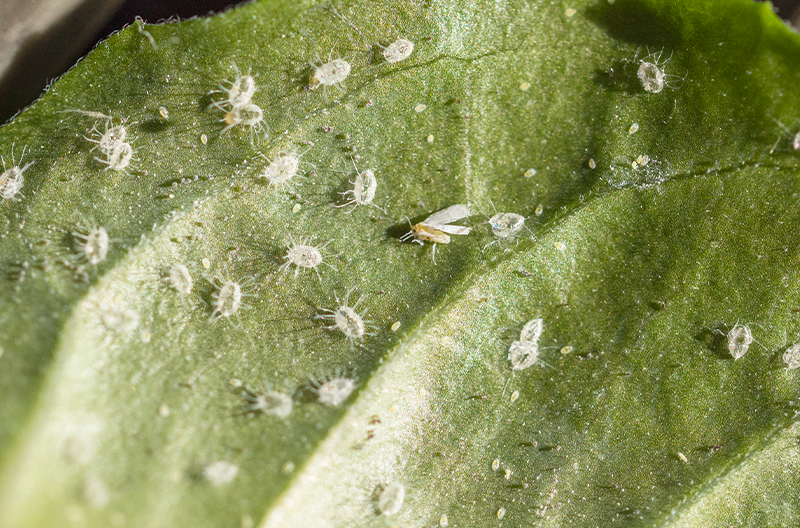
Whitefly larvae on a rose leaf
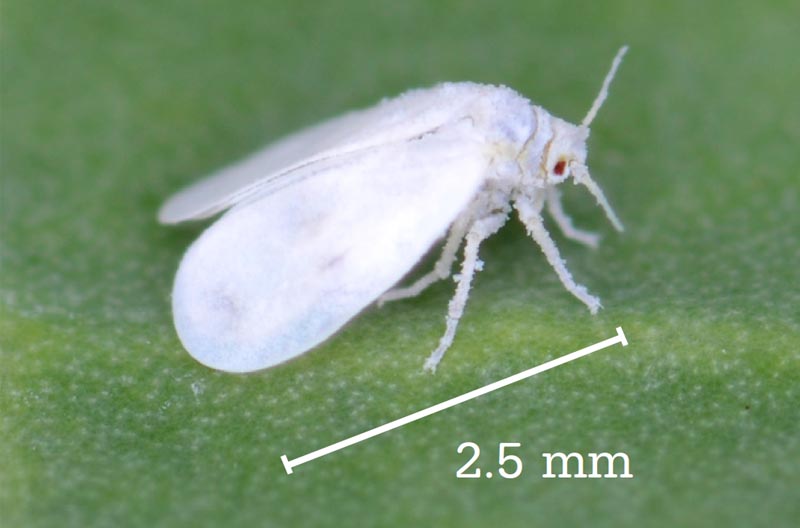
© Amada44, CC BY-SA 4.0
Vine Weevil
Black vine weevils are insects with beak-like snouts, which they use to dig tunnels at the base of the plant’s collar, where it lays its eggs and produces larvae. This action consumes and wears down the lymphatic circuit—resulting in the potential death of the plant. Vine weevils are usually found in pot plants and are most active from autumn to spring. Signs of vine weevils are irregular notches on leaf edging, as well as wilted or sick plants.
Unfortunately, vine weevil can be troublesome if they take hold. If the plant is not entirely affected, the wounds can be disinfected with copper. A biological nematode treatment, such as Nemasys L (Steinernema kraussei), can also be used. Nemasys L is a pathogenic nematode worm that hunts out vine weevil larvae within compost and weevil grubs, which are easier to spot. The nematode enters the weevil larvae and releases a lethal bacteria, resulting in the death of the host within just a few days. If the whole plant is affected, it must be cut completely to prevent vine weevil from spreading further.

Macro photo of vine weevil
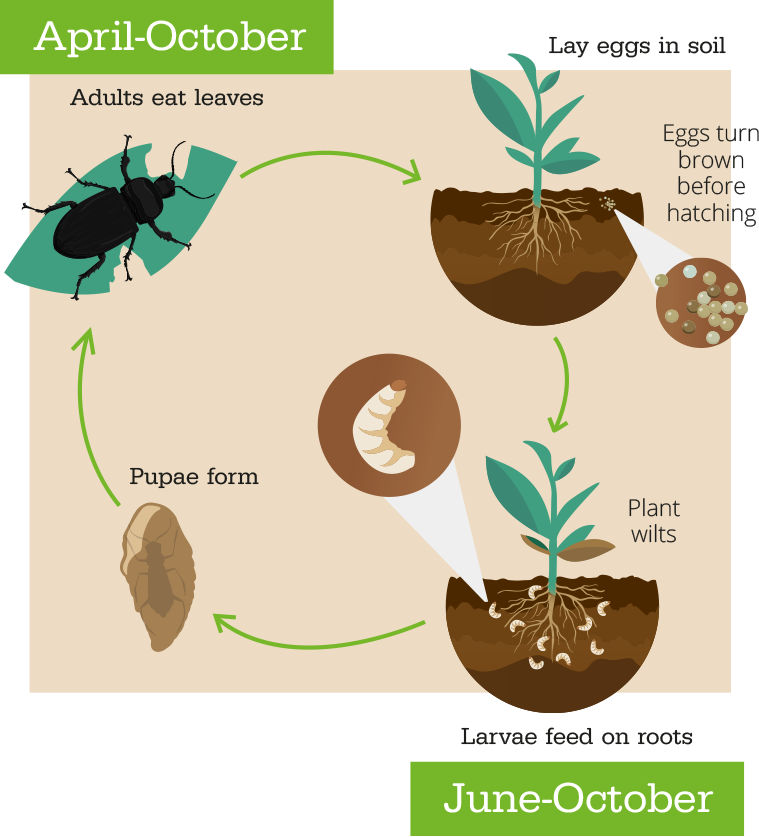
Two-Spotted Spider Mite
Two-spotted spider mites are very small and cannot be seen with the naked eye. They pierce the surface of leaves and feed on the cells which make up the leaf plate. As many as eight or ten generations are produced throughout warm seasons, so they spread pretty rapidly; this makes them very difficult to treat. Two-spotted spider mites can be found on ornamental and edible plants, and are most active from late spring to early autumn. Signs of two-spotted spider bite infestations include discolorations of leaves, which tend to burn bronze in colour and eventually fall; thin cobwebs; and a general loss of plant vigour.
A biological control agent, named Phytoline P (Phytoseiulus persimilis), is great for treating small two-spotted spider mite infestations. Phytoline P is a small orange-red predatory mite that feeds on all stages of the spider mite life cycle. With its faster life cycle, Phytoline P is able to rapidly reduce the spider mite population. In addition, Anderline AA (Amblyseius andersoni) is used to tackle spider mite within our greenhouses. These are slow release sachets; the predatory mite releases over a period of six weeks and is able to establish with little or no spider mites present.
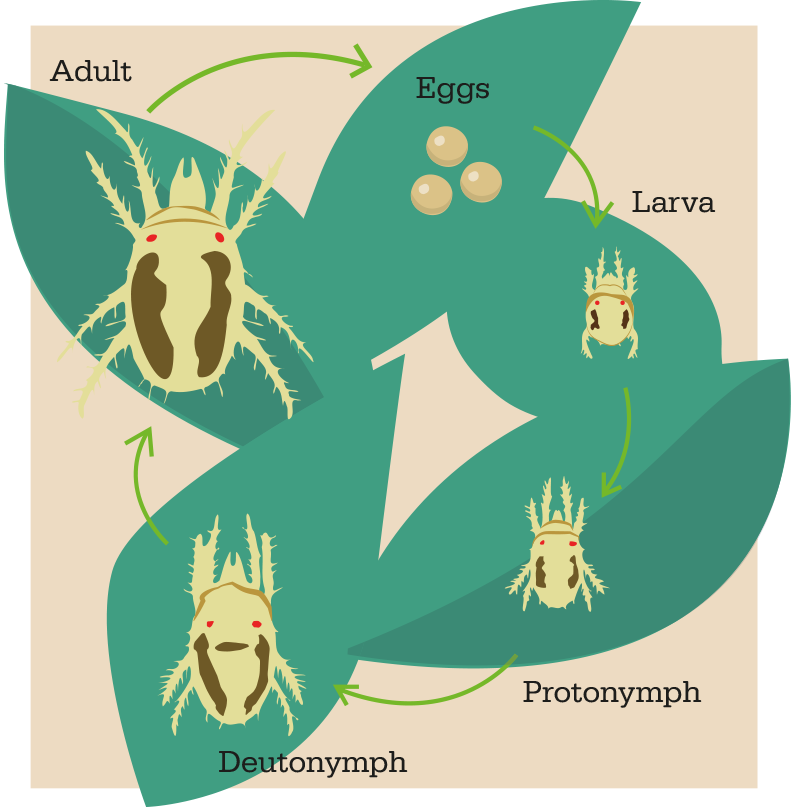
Slug
Slugs are classified as gastropods and are soft-bodied molluscs. Using their rasping tongues, they create holes in plant tissues—such as flowers, leaves and roots—which can be devastating in greenhouses and gardens. Slugs can be found on a wide range of ornamental and edible plants; they are most active at night and most problematic during warm, humid periods. Slugs could be present if you spot silver slime trails and irregular holes in leaves, stems, flowers, and other plant parts.
Nemaslug is a biological control method and is an effective form of slug treatment. Microscopic nematodes, which are combined with water and applied to soil, infect the slugs and kill them.

Rabbit
Rabbits are adorable creatures, but they can wreak havoc amongst herbaceous plants, shrubs, trees and vegetables. They gnaw away at bark, graze on foliage and dig holes in lawns and flower beds. Rabbits are active throughout the year but feed mostly between dusk and dawn. If rabbits are present, you may spot holes in lawns and flower beds; bark that has been gnawed on, on the base of tree trunks; grazed foliage; and soft shoots of woody plants. You may see find rabbits’ spherical droppings around areas with trees and plants.
Fencing can be an effective way to stop animals, such as rabbits, from entering. Ultrasonic pest repellent devices can also drive away intruders using ultrasonic waves.
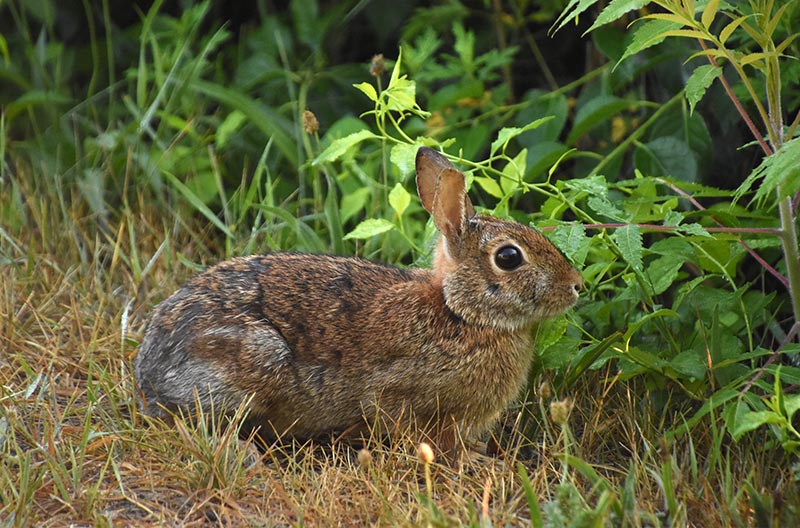
Diseases
Downy mildew
Downy mildew is caused by fungus and can disfigure the aesthetic appearance of ornamental and edible herbaceous plants, by causing withering and discoloration. Downy mildew attacks the plant leaves, which are visible in lower areas of the plant. As the infection progresses, fruit colours can change and it can potentially lead to rotting and death of the plant. Its most active periods are during summer and autumn, and it thrives in wet conditions. Look out for coloured spots on the leaves, which can change from yellow to brown or purple. The affected part can also rot and a formation of whitish mould can appear, causing the leaves to curl up and fall.
Depending on the level of downy mildew, leaves can be removed and disposed of when symptoms are spotted. Unfortunately, if the disease has taken over, the whole plant should be disposed of.
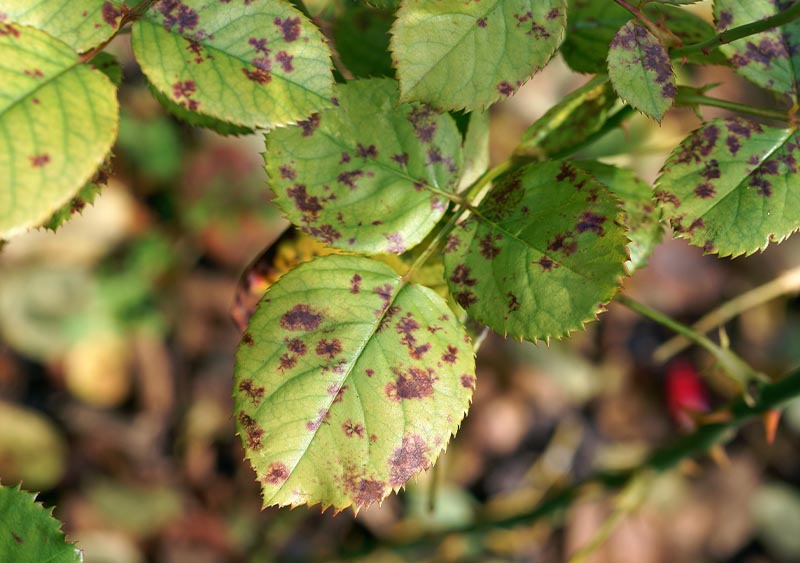
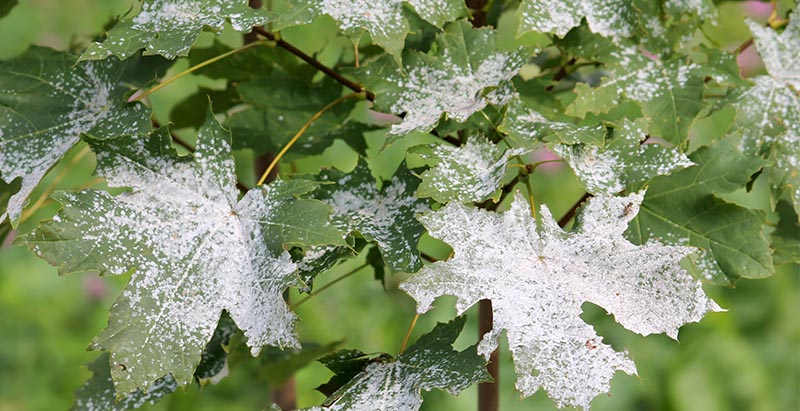
Powdery mildew
Powdery mildew
Powdery mildew is a fungal disease that can attack ornamental plants and cause dusty, white cobweb-like patches above the leaves and flowers. This can lead to the plant drying out, as well as wilting flowers. As the disease weakens the plant, the white mould can also contribute to other devastating infections. Additionally, the white disease spreads very quickly from plant to plant as it’s carried by wind. Powdery mildew is mostly a problem around spring; it favours warm days and cool nights.
If there has already been an evident attack or infestation, infected shoots should be removed, followed by a biological fungicide treatment.
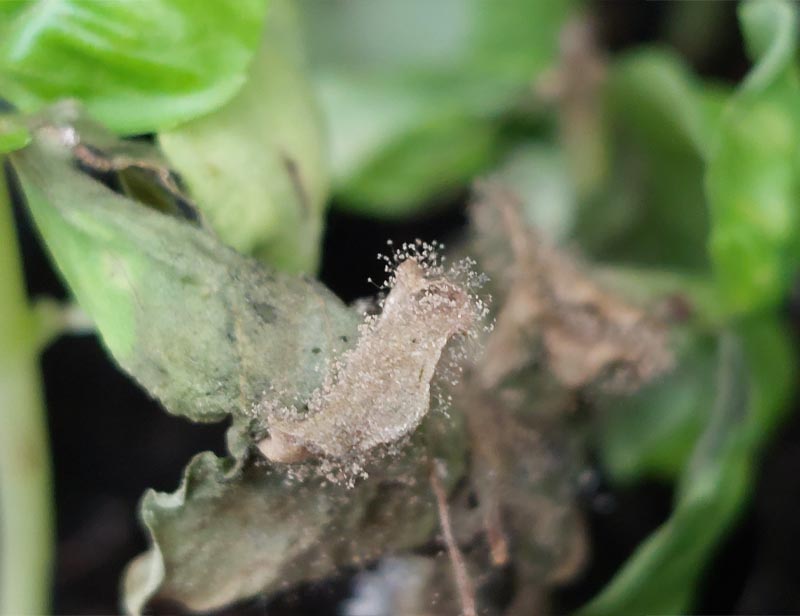
© Schlaghecken Josef, CC BY-SA 4.0, via Wikimedia Commons
Grey mould
Grey mould is one of the most feared fungal diseases, as it is very common and not particularly selective. It especially affects ornamental and soft fruit plants. Grey mould colonises all plant tissues by releasing enzymes which destroy plant cells. This process macerates the tissues, and can lead to death of the plant. Petioles which support the leaves and flowers can soften; this leads to the folding and withering of leaves and buds. The fungus devastates the plant tissues by “dissolving” them, which then leads to the interruption of flowering. In particularly extreme cases it can be devastating, as the collar of the plant rots and the roots will die. Signs of grey mould include a grey or whitish down in the softer areas, which becomes moist and rots.
To cure the plant, all mouldy parts are removed and sprayed with copper salts, such as Bordeaux mixture. Repeat this every ten days, until the symptoms disappear.
Leaf spot
Leaf spot is a broad concept that covers many fungal or bacterial diseases. Usually, brown or black patches with a darker margin will appear on the leaves of annual and perennial flowering plants, as well as some fruit and vegetable plants. They grow in size and combine, until the whole leaf dies and falls off, resulting in stunted growth and impaired aesthetic appearance. When the spots are caused by fungi, they have fungal pustules in the centre, which release the spores. Leaf spots tend to be most active during high temperatures and humidity.
If leaf spot is already present, infected shoots should be removed, followed by a biological fungicide treatment.
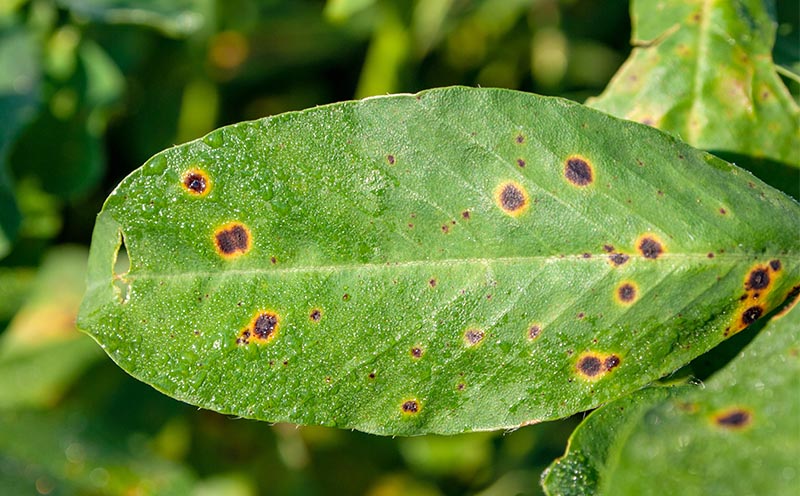
Root rot
Root rot is a serious plant disease that attacks the root system. It’s most commonly fungal, but can also be caused by bacteria or nematodes. Root rot heavily compromises the health of many container and soil grown plants by reducing their vitality and causing it to deteriorate. Root rot is most often a problem during excessively rainy periods and signs include dark spots on the leaves, which tend to turn yellow fairly rapidly, as well as roots which darken in colour and eventually rot. Unfortunately, root rot usually only shows obvious symptoms once it is too late to intervene; severe attacks will likely lead to death of the plant.
Treatment for root rot includes metalaxyl or copper salts, which can be applied to the collar of the plant. It’s also important to carry out this treatment on neighbouring plants to prevent the spread of disease. Ensure to dispose of dead or severely affected plants, along with their root system.
If you’d like to learn more about the benefits of biological pest control methods, as well as specific methods we use around our nurseries, take a look at our blog post.


